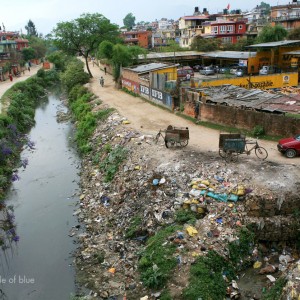Monsoon Season, Water Shortages Worsen Health Conditions in Nepal
The Nepalese government plans to improve sanitation access to combat water-borne diseases, while the monsoon season further complicates health problems in the country.
Twenty people have died from water-borne diseases while more than 400 cases of acute watery diarrhea have been recorded so far this year in Nepal, according to IRIN.
While the South Asian country has the second largest freshwater resource in the world it suffers from limited drinking water sources due to pollution and disease. Roughly 15 million people, about half the population, face drinking water shortages, while another 5 million don’t have access to safe drinking water, according to the Federation of Drinking Water and Sanitation Users Nepal, an organization that monitors water and sanitation. And with monsoon season in full effect–it runs from about mid-April to mid-October–major drinking water problems are worsening. In 2009, Nepal recorded 370 deaths and 67,000 cases of AWD during the six-month period, according to the Nepal Red Cross. Women, children and the elderly are often the most effected.
To combat these illnesses, the Nepalese government intends to expand access to toilets from 14.4 million to 19 million people by 2011, the The Himalayan reports.
Flooding, unsanitary dumping, agriculture and political confrontation have lead to further pollution of ground and surface water as well as a damaged water infrastructure.
“With water sources drying up, erratic rainfall and poor management of water resources, the problems are worsening every year,” said Prakash Amatya the director of NGO Forum for Urban Water & Sanitation.
More than 80 percent of diseases reported in Nepal stem from unsafe drinking water and poor hygiene, according to a 2009 report released by Water Aid, an international NGO that strives to improve water access and sanitation for communities. The report, End Water Poverty, reveals that 10,500 children die before the age of five every year from diseases contracted from unsafe water, which includes dysentery, hepatitis and cholera.
“This situation could affect a large number of families who have already been reeling under the immense water shortage situation over the last many years,” Ajaya Dixit, director of the Nepal Water Conservation Foundation, a non-partisan NGO that researches water issues in the Himalaya-Ganga region, told IRIN.
Meanwhile communities higher up in the Himalayas have limited access to the five tributaries of the River Ganges that serve as Nepal’s main water sources. These people live on less than 5 liters of water per person per day, according to a 2004 report from the University in Kathmandu.
Water deficiencies contribute to political turmoil both within Nepal and the region itself, according to Dan Smith, the secretary general of International Alert, an independent peace building organization that works in more than 20 countries.
Nepal is embedded between India and China, which also have large agriculture demands that consume a majority of the Himalayan water. A recently proposed Indian dam project on the trans-boundary Kosi River that is a tributary of the Ganges river, has caused political and social uproar within Nepal, reports The Himalayan.
Sources: The Himalayan, International Alert and IRIN.










Leave a Reply
Want to join the discussion?Feel free to contribute!